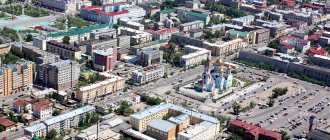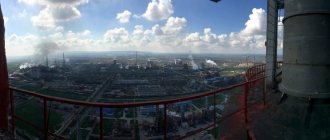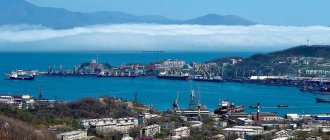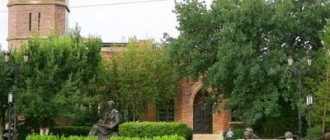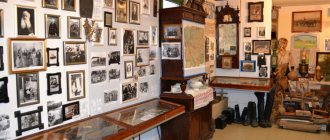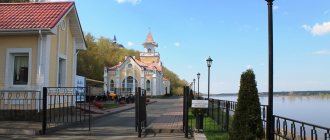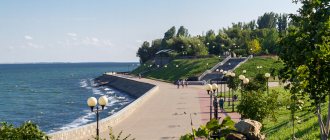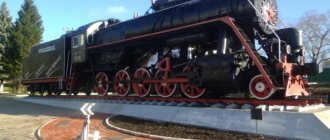The sights of Chita attract tourists from all over the country to the city. The Transbaikal region is known for its unique natural beauty, and its capital, Chita, is famous for its architectural monuments, museums, theaters and other cultural sites. When the city was just beginning to form, it was called a settlement without a population. At that time, the sights of the Trans-Baikal Territory were not known to Russians, and some of them had not yet appeared.
The exile of the Decembrists played an important role in the development of the city. Each Decembrist who came to Chita made some contribution to the cultural formation of the capital. Due to the small number of residents, there was an acute shortage of personnel in law enforcement agencies and the military sector. Later, the exiled revolutionaries began to build the Trans-Siberian Railway, which provided a connection between the remote town and the central part of Russia.
What is Chita famous for? Unique geographical location. Its remoteness made it possible not to participate in the destructive events that took place in Russia. This helped preserve many architectural monuments and historically significant places. A striking example is the building of the main post office, which is more than one hundred and thirty years old. The church in which the Decembrists took refuge was built in the eighteenth century.
Chita - attractions and interesting places to see in Chita
The sights of Chita, photos with names and descriptions of which are available on the Internet, are unique places that can take city guests back several centuries. Here, modern design and innovative projects are closely intertwined with the historical beauty of buildings and parks. The main attractions of the Trans-Baikal Territory, photos with descriptions:
- Lenin Square. The famous landmark appeared relatively recently - in the nineteenth century. At first it was Sophia Square, later – Novosobornaya. They began to put it in order when the cathedral was completed - in 1938. Asphalt was laid on the territory and several beautiful alleys were created. Later, a monument to Lenin appeared here, which became the reason for changing the name of the square. Today the Chita City Hall building is an architectural monument, a former apartment building.
- Regional History Museum of Transbaikalia. The sights of Chita, photos with names of which tourists often study before traveling to the city, are not limited to natural and architectural monuments. For example, in the local history museum you can get acquainted with exclusive exhibits. There are more than 190,000 of them here. The museum was founded in 1895, now it is the largest complex, rich in unique artifacts, exhibitions and historical values. The museum has several installations that completely imitate the life of the indigenous population, Decembrist documents, archaeological finds and local masterpieces of art. The house in which the museum is located is recognized as an architectural monument.
- Temple of the Decembrists. Heading the interesting places in Chita is the Church of the Decembrists, which is a real museum. This Staro-Chita St. Michael the Archangel Cathedral is a real repository of the most valuable artifacts. There are thousands of unique items on display here. The temple is considered a monument to wooden Russian architecture; it was built in the eighteenth century. Decembrists sent into exile came to church to get married, here they prayed for their relatives and buried loved ones. Some sights of Chita and the Trans-Baikal Territory are associated with tragic events, but they remind us of the difficult history of the country. Today the temple is not open, but the museum opened its doors to guests in 1985.
Photos of Chita
Chita: Photos Weather Map Flights Hotels
Countries of the worldRussiaCitiesChita
This collection contains 33 photographs of Chita, its views, houses and attractions, which were taken by local residents, tourists and photographers. All photos of Russian cities and attractions are presented in high quality, we hope that this will help you get to know them better.
VKontakte facebook twitter
Photos of other Russian cities Photos of Moscow Photos of St. Petersburg Photos of Sochi Photos of Tula Photos of Yaroslavl Photos of Vladimir Photos of Voronezh Photos of Yekaterinburg Photos of Ryazan Photos of Tver Photos of Sevastopol Photos of Dmitrov Photos of Rostov the Great Photos of Ivanovo Photos of Orel Photos of Nakhodka Photos of Belgorod Photos of Bryansk Photos of Volgograd Photos of Kazan Photos of Kaluga Photos Krasnodar Photo Lipetsk Photo Nizhny Novgorod Photo Penza Photo Samara Photo Saratov Photo Smolensk Photo Tambov Photo Chelyabinsk Photo Anapa Photo Kolomna Photo Yuzhno-Sakhalinsk Photo Vladivostok Photo Grozny Photo Izhevsk Photo Kostroma Photo Kursk Photo Omsk Photo Perm Photo Rostov-on-Don Photo Ufa Photo Cheboksary Photo Chita Photo Kerch Photo Pushkin Photo Sergiev Posad Photo Murom Photo Yeisk Photo Abakan Photo Saransk Photo Dolgoprudny Photo Balashikha Photo Irkutsk Photo Kirov Photo Novosibirsk Photo Orenburg Photo Podolsk Photo Ulyanovsk Photo Essentuki Photo Magadan Photo Alushta Photo Mytishchi Photo Krasnoyarsk Photo Togliatti Photo Khabarovsk Photo Myshkin Photo Kaliningrad Photo Rybinsk Photo Stavropol Photo Suzdal Photo Tomsk Photo Tyumen Photo Pyatigorsk Photo Ukhta Photo Astrakhan Photo Blagoveshchensk Photo Murmansk Photo Novorossiysk Photo Pskov Photo Ulan-Ude Photo Gelendzhik Photo Uglich Photo Pitkyaranta Photo Arkhangelsk Photo Barnaul Photo Vologda Photo Yoshkar-Ola Photo Kemerovo Photo Kurgan Photo Magnitogorsk Photo Nalchik Photo Surgut Photo Taganrog Photo Yakutsk Photo Simferopol Photo Balakovo Photo Svetlogorsk Photo Ordzhonikidze Photo Zheleznovodsk Photo Engels Photo Komsomolsk-on-Amur Photo Armavir Photo Vladikavkaz Photo Makhachkala Photo Norilsk Photo Tuapse Photo Yalta Photo Torzhok Photo Ples Photo Alexandrov Photo Volgodonsk Photo Angarsk Photo Bratsk Photo Naberezhnye Chelny Photo Novokuznetsk Photo Syzran Photo Cherepovets Photo Sudak Photo Veliky Novgorod Photo Kislovodsk Photo Kalyazin Photo Mineralnye Vody Photo Kovrov Photo Belokurikha Photo Pereslavl-Zalessky Photo Sortavala Photo Derbent Photo Petrozavodsk Photo Syktyvkar Photo Feodosia Photo Novocherkassk Photo Vyborg Photo Kozelsk Photo Elista Photo Balaklava Photo Foros Photo Nizhnevartovsk Photo Petropavlovsk-Kamchatsky Photo Pechory Photo Salekhard Photo Tobolsk Photo Valdai Photo Yuryev-Polsky Photo Nizhny Tagil Photo Severodvinsk Photo Anadyr Photo Zadonsk Photo Khanty-Mansiysk Photo Priozersk Photo Vorkuta Photo Temryuk Photo Dzerzhinsk Photo Kirzhach Photo Gatchina Photo Kronstadt Photo Elabuga photo of the great Ustyug photo Maykop photo of the old Russa photo miass photo Hasavyurt photo of Shlisselburg photo Alupka photo bachisaray photo of Peterhof photo of the great Luke photo of the Baltiysk photo of Nevyansk photo of Nevyansk photo of Nevyansk photo Kidekshi photo Verkhoturye photo of the Ostashkovsk photo of Chernyakhovsk photo of the Ussuriyska photo Photo of Sterlitamak Photo of Zelenogradsk Photo of Neman Photo of Sovetsk Photo of Polessk Photo of Severomorsk Photo of Roslavl
Chita
Description Photos Weather Map Flights Hotels
See also: Photos of Zadar, Sights of Syria, Cities of Bonaire, Ukraine, Kristiansand, Frankfurt am Main, Novosibirsk Zoo, Central embankment of Volgograd
What to see in Chita - attractions, historical buildings of Chita
The sights of Chita are often associated with historical buildings. The amazing architecture features a drama theatre, many temples and other objects built more than a century ago. What is the city of Chita famous for:
- Kazan Cathedral Church. Relatively new building, erected in 2001. Previously, there was an old stadium on the site of the church. The building is decorated in the Vladimir-Suzdal style. The cathedral stands out visually due to the non-standard color scheme chosen for decoration. The weight of the main bell is almost ten tons. There are thirteen bells in total. This is the largest cathedral in the Far East.
- Main Post Office Many beautiful places in Chita have a long history. The building in which the Main Post Office is located to this day was built in 1893. Initially, there was only a postal and telephone office here. Later, savings banks appeared. Twelve months after the opening of the building, a consumer union settled here. The next object was the library. It was the Main Post Office that became the first starting point of the telephone cable.
- Titovskaya Sopka. Everyone knows what Chita is famous for. These are unique mountain ranges with stunning nature. The hill is part of a mountain system that was once considered a volcano up to 450 meters high. Archaeological excavations have been carried out here for a long time; scientists managed to find important paleontological elements: mammoth tusks, several burials made in the Bronze Age, petroglyphs and much more. Previously, there was a cross on Titovskaya Sopka, but in 2002 a chapel was erected in its place.
- Chapel of Alexander Nevsky. The consecration of the chapel took place in 2001, in the fall. The building was located on Titovskaya Sopka, it was built quite quickly - over the course of two and a half months. Work began at the beginning of June, and the consecration of the dome cross took place at the end of August.
- Chita datsan. For a long time Chita could be proud of a Buddhist temple of incredible beauty, but the revolution destroyed this excellent structure. Reconstruction began at the end of 2002, and the completely restored building was consecrated in 2010. Today, services are regularly held here and holidays are celebrated. Datsan has the most modern equipment in comparison with all the temples in Chita. To support the environmental protection program, materials obtained by recycling plastic containers were used in construction.
“Walks in Time”: Station Square
In 2013, one of the most favorite projects for both Chita.Ru journalists and our readers was “Walks around the City.” We walked along 30 streets with cameras, notebooks and a good mood, making sure that love for one’s hometown with all its problems can be not only conscious, but also highly rated - the project became one of the most popular on the Chita city portal.
In 2014, we deliberately rebooted all the projects launched in previous years, not wanting to stop there.
“Walks” has also been rebooted, and now we will write not about individual streets, but about corners of the city, streets, buildings and sidewalks in which are united according to some characteristics. In some places these are blocks built at the same time, in others they are entire microdistricts, in others they are architectural support for key areas of the city. Continuing to walk around Chita in winter, spring, summer and autumn, we will try to show you the details that make up our city, remind you of its glorious and truly fascinating history, and prove that each era is important and interesting in its own way.
Train stations and adjacent squares are the distinctive face of most cities in the world. Visitors, as a rule, first go down to the platform, look around at the space around them and begin to draw conclusions about their location, and only then find themselves at the main attractions. Chita is no exception here.
Today, the square, located near the bank of Chitinka, is more of an attribute of a station with a transport interchange in the center, rather than, as originally intended, a place for citizens to spend time. Actually, that’s why it now bears such a name – station. What it was like in pre-revolutionary, Soviet and post-perestroika times - in the first text of the “Walks through Time” project.
The era of the chieftain
The history of the square can be divided into several stages, which are associated either with the appearance of politically and economically significant buildings for the city, or with a change of power in the capital. Before the first such event, it was considered the main city square, which is why on the general plan of 1861 it was called “City Square”.
Everything that happens in Transbaikalia and the city of Chita
Approximately at the same time, when the general plan of Chita was approved, and the peasants were dissolved by the reform, the first building appeared on the square, in honor of which it was first renamed. We are talking about the house or, as it was also called, the “palace” of the ataman of the Trans-Baikal Cossack army - the military governor of the Trans-Baikal region. Adjacent to it was the Ataman's garden and the square itself. The building was located at the beginning of Sofiyskaya Street (now Butina) just south of the current railway technical school.
By the end of the 19th century, Ataman Square was a wasteland covered with sparse grass and yellow-black sand in the middle. In addition to the ataman's palace, the square faced the buildings of the military assembly, the military Cossack economic administration, the regional administration and the parish Michael-Arkhangelsk school, which was later renamed the second city school.
Everything that happens in Transbaikalia and the city of Chita
Some of these buildings were marked on the general plan of Chita in 1885. In particular, the regional administration (No. 5 on the plan) and the complex of buildings of the military economic administration (No. 6). Judging by the plan, in the area of the current Transbaikal Institute of Entrepreneurship at that time there was a military guardhouse (No. 22) and by that time there was already a city second-grade school (No. 23), and just below the city government (No. 24). The ataman's palace (No. 2) was also marked on the plan. The southern part of the square abutted the bank of Chitinka - the railway tracks did not yet interfere with getting to it.
Everything that happens in Transbaikalia and the city of Chita
Everything that happens in Transbaikalia and the city of Chita
Everything that happens in Transbaikalia and the city of Chita
In 1890, in the northern part of the square, where the cathedral is now located, and then there was a wasteland, in memory of receiving royal gratitude for the good condition of the troops, a stone military chapel of St. Alexander Nevsky was founded and consecrated. Icons from all the Cossack villages of the Transbaikal region were placed there, but the image of St. Alexander Nevsky, donated by Tsarevich Nicholas in 1890, was considered the most valuable. A member of the imperial dynasty would later return to him and even pray with him. This will happen a year later, in 1891, when Nikolai makes a visit to Chita.
Everything that happens in Transbaikalia and the city of Chita
About that memorable meeting on Ataman Square, Prince Ukhtomsky wrote: “His Imperial Highness, met in the chapel by Hieromonk Stefan, deigned to ask the Nakazny Ataman about the construction of the chapel, praying before the icon of St. Alexander Nevsky, which He Himself in a rich robe sent to the Transbaikal army and solemnly consecrated July 13, 1890."
Despite the name change, the square was still considered the main city square. There, since 1891, annually on March 17, the day the regulations on the Transbaikal Cossack Army (ZKV) were approved, parades of Cossack troops, as well as other city events, were held.
Liberty
The next milestone in the history of the square was marked by the completion of the construction of the railway line. The Chita station was opened in 1899 on the Petrovsky Zavod - Karymskaya section. The first train arrived in Chita from the east on December 22, 1899. In the same 1899, construction of the station began. In 1903 it was commissioned.
Everything that happens in Transbaikalia and the city of Chita
Around the same time, the ataman's palace burned to the ground, after which the local commander moved to the officers' meeting, located nearby, opposite the square - on the other side of Amurskaya Street. In 1910-1911, on the site of the burned building, a ZKV apartment building was erected at the expense of the military-economic administration of the army. This is the same red brick building that is now located at Butina, 1, without signs or any identification marks. The only thing we could find out about it was that in Soviet times it was transferred to the military and, apparently, is still in their use.
Everything that happens in Transbaikalia and the city of Chita
Everything that happens in Transbaikalia and the city of Chita
The last years of Tsarist Russia were, perhaps, the dawn in the life of the pre-revolutionary square. It was surrounded by a low wooden fence in 1904. Since the beginning of the 20th century, it began to acquire the status of a sports facility. It hosted a winter skating rink and gymnast parades in the summer. Since 1911, the square became a kind of football stadium; local teams held matches here. The area was illuminated by several gas lamps.
Everything that happens in Transbaikalia and the city of Chita
Here, in 1911, they celebrated the 50th anniversary of the abolition of serfdom by Tsar Alexander II, in whose honor Atamanovskaya Square, and behind it Amurskaya Street, were renamed Aleksandrovskie.
As Vladimir Lobanov wrote in the book “Old Chita,” it was also planned to erect a monument to the Tsar-Liberator on the square and carry out landscaping, turning the square into a public garden. The name of the square was changed in advance to Alexander Square, as it later turned out, they were in a hurry. This name was also fixed on the general plan of the city in 1911.
Everything that happens in Transbaikalia and the city of Chita Everything that happens in Transbaikalia and the city of Chita
In 1914, the Franz Isaco Circus was built on the square near the station, where over the next three years - until 1917 - in addition to circus performances, sports competitions were held. Since 1915, captured soldiers of the Austro-Hungarian army were kept there.
Freedom. Version 2.0
Another change in the name of the square was due after the February Revolution of 1917. With the coming to power of the Bolsheviks, who hated tsarist times, it could not retain its former name. The Alexander Nevsky Chapel was also demolished. The new name of the square was inspired by the times - Freedom Square. Here, on March 10, 1917, the city population and troops took the oath of allegiance to the provisional government. From 1917 to 1922, power in the city changed hands - from the Reds to the Whites, from the Whites to the Far Eastern Republic, from the Republic to the Soviets.
After the Whites in 1920-1922, Transbaikalia fell into the Far Eastern Republic, and Freedom Square turned into a military parade ground. Military parades were held here, and in May 1922 it was surrounded with barbed wire and leased for two years to the local branch of the General Military Training Society.
During Soviet times, which began in Chita in 1923, the square was still the center of the city. Demonstrations, parades and rallies - the most important events of the time - were held here.
It's time for rebirth
The era of renaissance for the square was the beginning of the construction of a stadium for the Dynamo sports society, which was opened in 1932, and in the 1960s it was transferred to the Trud society. Next to it, local authorities laid out a park with fountains, where a monument to Vladimir Lenin was erected.
After these changes, Lenin Square took over the autocracy among the venues for official communist events; the name was ideal for this. Freedom Square has turned into a central recreation area. In the summer, the stadium hosted football matches of local and visiting teams, which attracted full stands. In winter there was a skating rink.
The square located nearby delighted with its greenery and beautiful fountains. They existed in this form almost until perestroika, but the architectural ensemble surrounding them gradually changed.
Everything that happens in Transbaikalia and the city of Chita
Everything that happens in Transbaikalia and the city of Chita Everything that happens in Transbaikalia and the city of Chita
Until 1948, when the building of the suburban ticket office was commissioned, the Chita railway station consisted of one building, erected in pre-revolutionary times. A rest room was opened in 1973, and in 1975 the station acquired the now famous building with a clock tower. Perhaps only a lazy tourist who has visited the capital of Transbaikalia does not have a photograph of him. In 1979-1980, the construction of the station was completed - the luggage compartment was opened.
Everything that happens in Transbaikalia and the city of Chita
Everything that happens in Transbaikalia and the city of Chita
Everything that happens in Transbaikalia and the city of Chita Everything that happens in Transbaikalia and the city of Chita
Everything that happens in Transbaikalia and the city of Chita Everything that happens in Transbaikalia and the city of Chita
Everything that happens in Transbaikalia and the city of Chita
For the square near the station, 1959 was the year of the opening of two new buildings for the Chita College of Railway Transport and the Cooperative College (now the Transbaikal Institute of Entrepreneurship). It is interesting that the cooperative technical school was opened in 1946 in Sretensk, from where it moved to a new building near the station after its completion, only in 1959.
Everything that happens in Transbaikalia and the city of Chita Everything that happens in Transbaikalia and the city of Chita
Orthodox ellipsis
This is exactly the area that ended up being rebuilt. The new capitalist time did not spare her. First, the Trud stadium began to become overgrown with all kinds of kiosks, lumps and stalls. Here you could buy almost everything, even weapons that were popular at that time. There was also a billiards club. Then, in the early 2000s, the stadium was completely demolished for the construction of a cathedral in the name of the Kazan Icon of the Mother of God, which was supposed to replace the cathedral destroyed by the Bolsheviks in 1936 on Decembrist Square. The park with fountains was not saved either, but they were replaced with a couple of additional road lanes to relieve the congestion on the streets clogged with cars. By this time, they had ceased to be a luxury; purchasing them had become easier.
According to the diocese's website, there was a long discussion about the location of the new church. Several construction sites were proposed: Lenin Square, the park of the House of Officers, the intersection of Novobulvarnaya and Leningradskaya streets, the area of the Memorial to the Labor and Military Glory of Transbaikalians, two options on Revolution Square, the corner of Novobulvarnaya and Krasnaya Zvezda streets, Trud stadium. As a result of a public opinion poll and a design competition in September 2001, the mayor of Chita, Anatoly Mikhalev, signed a decree on the design and construction of the temple. As a result, the death warrant was signed for the only stadium in the center of Chita.
For some time, a small bus station huddled at the foot of the huge cathedral, which was also displaced by the Orthodox Church. After some time of wandering, the bus station ended up in the building of a railway station, and in its place near the cathedral they planned to erect two chapels and a monument to Alexander Nevsky in 2013. Judging by the fact that there is still nothing behind one of the two plots fenced off for them, the diocese will not have time to finish them in the first half of 2014.
Such an abundance of religious objects on the station square in the absence of a bus station building does not suit many people. Among these many is a man who worked for more than 35 years - from 1962 to 1997 - as the chief architect of the Chita region - Alexey Shegera.
“When I arrived in Chita, the station square already had most of the buildings around the perimeter and a square with the Trud stadium. My colleagues and I planned to make it as functional as possible in the future. So that from there you can go to any point on the globe, even to the North Pole. After I left, these plans were forgotten. Now there is nowhere to place a bus station,” Shegera states dissatisfied.
Today, the station square is more of a road junction with a cathedral at the head, rather than a square in its direct sense. I think the diocese will mark the final point in its formation in the near future with two more chapels and a monument. Well, the station square, one way or another, reflected the needs of society at different times. Apparently, the time has come to believe...
Chita - attractions and interesting places with photos, Shumovsky Palace, Chita
We list the beautiful places in the city where you can not only admire nature, but also take amazing photographs:
- Botanical Garden of Transbaikalia. The facility opened in 1990 with the goal of educating residents of the city and country. The work of the botanical garden also helps to expand the number of plant varieties. Experts conduct a lot of research here, identifying non-standard vegetation. They are trying to develop the most adaptive conditions for new representatives of the flora. Tourists can go on a themed tour to learn as much as possible about the work of the garden.
- Zazovsky estate. Merchant Solomon and Zusya built the famous estate in the twentieth century. It became the most expensive in the entire city. Some of the premises were rented by tenants. The Samson restaurant, the Siberian Bank, and later the main grocery store were located here. The managers of the main Singer store moved to the estate in 1917. This unique building, made in a consistent style, made an impression on the townspeople walking by.
- FSB building, Chita. Previously, it was the famous Shumovsky Palace, which is still considered an architectural monument of the city. It was built at the beginning of the twentieth century. The external facade is decorated with stucco, the filigree work of the architects is visible in every element. The building received the Grand Prix award in the French capital in 1911. The Eiffel Tower received a similar award.
Monument to Love and Fidelity in Chita. The opening date of the famous monument is 2011. The project was created by the famous architect Grigoryan. The monument was built on the place where the wives of the Decembrists lived; they went to fetch their loved ones who were awaiting exile. The sculpture of a young couple symbolizes sincerity, openness, and sensuality.
